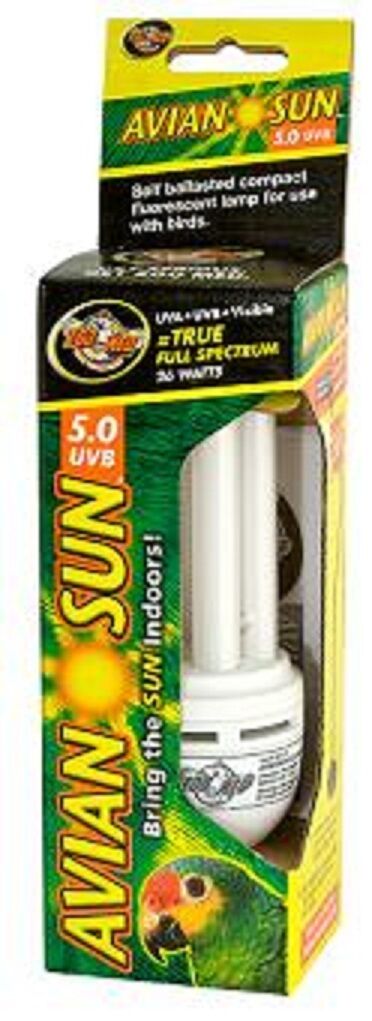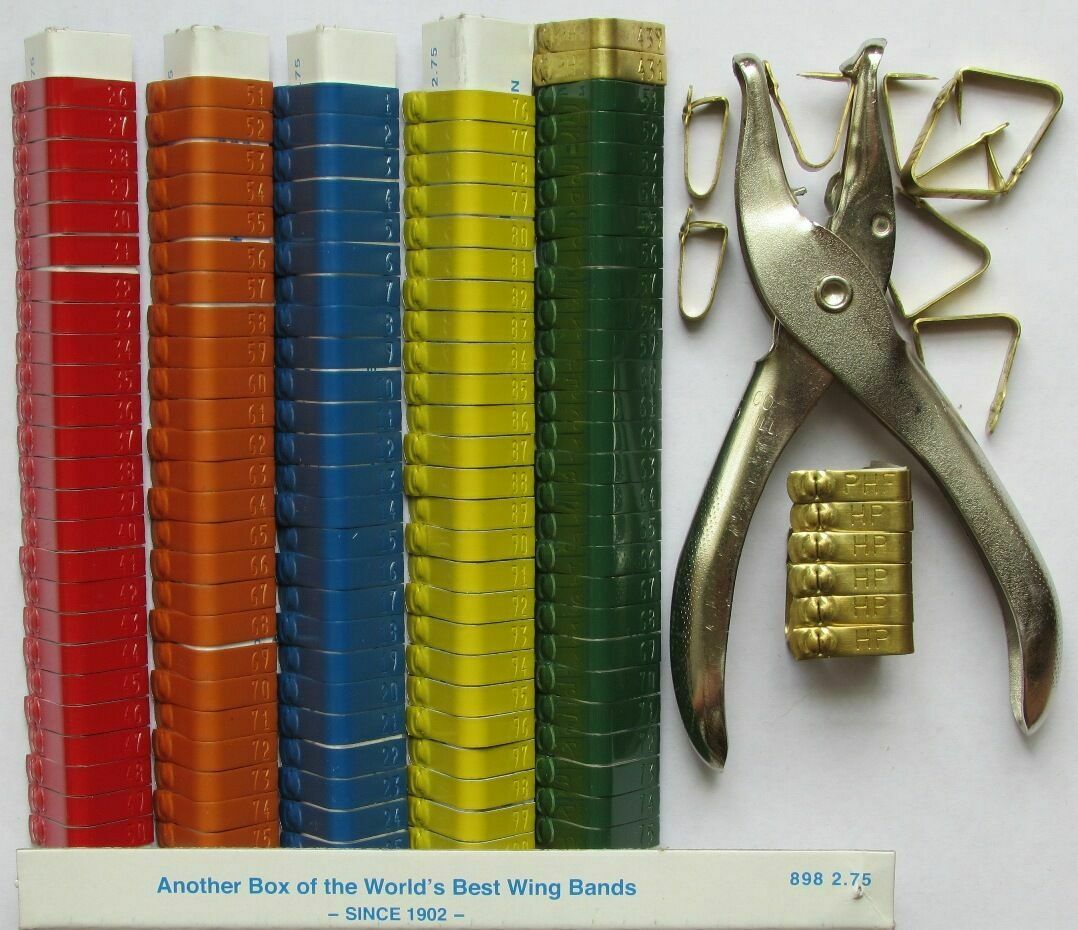-40%
Zoo Med Avian Sun 5.0 UVB Bulb 26 watt
$ 18.05
- Description
- Size Guide
Description
Zoo Med Avian Sun 5.0 UVB Bulb 26 wattThe Avian Sun UVB Compact Fluorescent provides birds with safe levels of beneficial UVB and UVA for physical and psychological health.
UVB enables birds to synthesize vitamin D3 for proper calcium metabolism which is necessary for normal growth, maintenance of strong bones,
and egg production. UVA is visible to birds, enabling them to recognize mates, locate food, and identify different species.
Without UVA, birds are essentially colorblind! UVB: is a necessary part of the process in which vitamin D3 is produced in the skin of humans and animals,
and is also what causes sunburn in humans. The vitamin D3 that is produced is responsible for regulating calcium metabolism.
A lack of UVB and vitamin D3 can ultimately result in metabolic bone disease in reptiles, and rickets in humans.
Nearly all animals that are active during the day are exposed to UVB.
This includes birds living in heavily shaded tropical forests, and birds in open areas with direct sunlight exposure.
Even though birds are exposed to UVB in their natural habitat, UVB has been traditionally ignored for pet birds.
We know from science and experience that UVB is beneficial, if not absolutely necessary for humans and most reptiles.
We now know that birds also benefit from UVB. There was a good article in the journal “Exotic DVM” recently on“The Effect of UV-B Lighting Supplementation in African Grey Parrots.”
This study determined that exposure to UVB with African Grey Parrots resulted in higher blood levels of vitamin D3 as compared to Parrots
without exposure to UVB lighting, with and without vitamin D3 in their diet.
The author found that the parrots were able to meet their vitamin D3 requirements through UVB alone,
rather than through the presence of Vitamin D3 in their diet.
The author states in his article that “it would appear prudent to supply both an adequate diet and UV-B lighting to
grey parrots in order to prevent clinical manifestations of hypocalcemia in this species”
and “the author now routinely recommends provision of UV-B lighting to African species.”
The Exotic Pet Vet website posted an article explaining one method that birds use to synthesize UVB that involves the preen (Uropygial) gland.
Please see the following link for reference: In this process, Vitamin D3 precursors are secreted by the preen gland.
These precursors are spread over the birds feathers when the bird preens.
and then exposed to UVB and converted to active vitamin D3, and then ingested upon future preening.
As some birds lack a preen gland, birds are also able to produce vitamin D3 through the exposure of the skin on their legs and near their beak to UVB.
It should be noted that many advanced hobbyists have determined that UVB had a positive effect on their birds,
and customers have been using our ReptiSun 5.0 for their birds for many years with great success.
Since vitamin D is a fat soluble vitamin, too much dietary vitamin D can result in an overdose.
This is actually how many rodent poisons work. With UVB induced photosynthesis of vitamin D3,
the risk of overdose is potentially reduced since this has been discovered to be a biologically regulated process.
UVB is necessary for the physiological health of pet birds. UVA: It is well established,
with literally dozens and dozens of articles in scientific journals on this subject, that birds can actually see UVA.
Humans have three different types of cones in our retina, each one being sensitive to a different wave length.
From these three types, we are able to make up our entire color spectrum.
Humans that are red/green colorblind lack the third cone type and only have two.
Birds, reptiles and amphibians possess FOUR different cone types instead of three.
The fourth cone is sensitive to emissions in the UVA portion of the electromagnetic spectrum.
This fourth“primary color” makes up the birds entire range of visible light.
By not providing UVA, the birds are essentially colorblind. It is similar to the condition of color blindness in humans.
Knowing this, it could be considered negligent to deny a pet bird access to UVA as this is essential to the psychological well being of birds.
UVA plays a role in species recognition, and in mate selection.
It has also been suggested that the psychological benefits of UVA can result in reduced feather picking and other destructive disorders.
AvianSun 5.0 UVB compact fluorescent lamp:
The AvianSun 5.0 provides UVB and UVA in levels that are comparable to what would be received in the shade outdoors.
We have found that this is a safe and effective level of exposure and can be used to provide birds with a normal photo period, without providing too much UVB.
If the level was the same as that of the sun, the lamp could only be left on for short periods of time,
and the bird would be without light for a portion of the day.
This lamp should be used for 8 to 10 hours per day to provide visible light, UVB, and UVA (this is a TRUE full spectrum lamp).
The lamp should be situated so that it is approximately 12 to 18 inches from where the bird might normally perch.
Watch out for other “full spectrum” lamps that provide only UVA and visible light.











